The Story of Culture and Arts
- Image resource of Korean history
- Documents from History TextBooks
- Culture & Art Stories from Korean History
- Culture & Art Stories from Korean History - Korean
- National Institute of Korean History
- History net
- About the site
- Introduce
-
Numerous topics related to Korean culture and art are mentioned in middle and high school national history textbooks, but most of them are briefly described by era, making it difficult to understand their concepts, transition processes, and characteristics.
<Culture & Art Stories from Korean History> produces and provides video materials based on expert commentary on the flow, change process, characteristics and characteristics of each major topic in the field of culture and art in Korean history.

Scenario
Joseon Dynasty White Porcelain was sold at a high price at an antique auction in Korea!
Joseon Dynasty white porcelain is valued highly even overseas.
Let’s find out what makes Joseon Dynasty White Porcelain so attractive and valuable even after the passage of six centuries.
Why did the Joseon Dynasty Love White Porcelain?
The King ordered the Ministry of Rites to replace the silver ware used at Munsojeon Shrine and Hwideokjeon Shrine with white porcelain ware. Annals of King Sejong, Vol. 116, 29thyear of King Sejong(1447)
In the early Joseon Dynasty, King Sejong issued a royal edict that the expensive silver dishware used at Munsojeon Shrine, where the ancestral tablets of King Taejo and Taejong were enshrined, be replaced with White Porcelain ware
Changing the dishes used by the royal family signaled an important social change.
“The Joseon Dynasty was a neo-Confucianism country. It was very practical. The luxurious materialistic culture of the Goryeo Dynasty changed in the succeeding Joseon Dynasty to a culture that emphasized practicality. As such, the royal family of the Joseon Dynasty built royal kilns in Gwangju, Gyeonggi-do Province called 'gwanyo' and made various types of dishes and bowls for their use. From that time and for 500 years, White Porcelain became the royal dishware for the Joseon Dynasty. It came to represent the culture of the royal family and the Joseon Dynasty.” Park Jeong-min / Professor, Dept. of Art History, Myongji Univ.
White Porcelain was used in various royal family rites.
By using the same colored and same sized White Porcelain,
every ritual was formally performed with a sense of consistency.
At the same time, White Porcelain was a political device
That to a degree served to control the extravagance that pervaded society.
So why was Gwangju chosen as the site for the royal kilns instead of other locations?
It was in the Goryeo Dynasty that people began to produce White Porcelain, which until then had been imported from China. However, Goryeo Celadon
was the main product, as the white clay that was needed to create high-quality White Porcelain as sturdy as Chinese Porcelain was difficult to procure.
The production of excellent quality White Porcelain that was sturdier than other types of porcelain only became possible in the Joseon Dynasty with advances made in White Porcelain production techniques.
In the early Joseon Dynasty, the 139 kilns spread throughout the country mainly produced Buncheong ware. There were only 4 kiln sites
in the whole country that were capable of producing high-quality porcelain ware.
Among the kiln sites, those located in Gwangju were closest to Hanyang, the capital of the Joseon Dynasty (today’s Seoul). Kilns capable of producing porcelain ware of excellent quality already existed from the early Joseon Dynasty,
Gwangju also provided firewood for the royal family, so it was environmentally suitable for White Porcelain production. This is also why so many White Porcelain artifacts can be found in Gwangju.
For the White Porcelain with cobalt blue underglaze that was used in various royal family ceremonies and state functions, they even sent government artists to paint patterns on them. As a result, White Porcelain with cobalt blue underglaze embodied remarkable artistry.
When we think of White Porcelain, we often imagine elegant porcelain of pure white.
White Porcelain with cobalt blue underglaze, mostly used by the royal household, was decorated with beautiful patterns drawn using cobalt pigment, an expensive and rare ingredient.
Some Royal Kiln porcelain was marked with a letter or other inscription under the base to indicate the piece was state property and under strict regulation.
The cobalt oxide pigment had to be imported from China, so it was very expensive and the supply unstable.
“The cobalt oxide pigment used in White Porcelain with cobalt blue underglaze was very expensive. This is because most of the supply was imported. In the Mid-Joseon Dynasty, when the country suffered the Japanese invasion of 1592 and the Manchu War of 1636, it became even harder to procure.” Kim Jin-yeong / Curator, Gyeonggi Ceramic Museum
White Porcelain made with iron pigment underglaze became an alternative to White Porcelain with cobalt blue underglaze as the pigment was easier to procure.
When the Joseon Dynasty economy stabilized in the late 17thcentury,various types of White Porcelain were produced.
At this time, White Porcelain jars measuring over 40cm tall were produced.
Such large and round jars were unique to Joseon and not found in China or Japan at the time. The jars possess unique, voluminous shapes which exude a sense of confidence and luxury.
The Name of the White Porcelain Piece Says it all
White Porcelain pieces are categorized into different types and have varying names according to their patterns and the pigment and technique used in their fabrication.
In order to understand the names of these pieces, we must first learn about how they are produced.
White Porcelain Production Process
Dishware is made using white clay.
Undergoes biscuit firing by being baked in the kiln for 10 hours.
Patterns are drawn on the surface using cobalt oxide and underglaze iron brown pigments, then it is coated with glaze.
Baked in the kiln again at 1,300℃ degrees
Using white clay, the dishware is made and then undergoes a biscuit firing in the kiln for about 10 hours. After the initial baking, patterns are drawn on the surface using cobalt oxide and underglaze iron brown pigments before the item is coated in glaze. The piece then returns to the kiln at 1,300℃ degrees.
Among the patterns on White Porcelain, the dragon symbolized kingly authority, so it was only allowed on Royal White Porcelain.
Other diverse patterns emphasize the Confucian culture of the Joseon Dynasty and the scholarly spirit, which was prized at the time.
The name of the White Porcelain piece may look long and complicated, but if you know how to read it, it tells you what techniques were used, when the item was made and what it was used for.
Why don’t we take a look at the names of the White Porcelain pieces on display in a museum and imagine what it was like back then?
The shape of White Porcelain pieces became diverse in the late Joseon Dynasty, and unique porcelain pieces in square and octagonal shapes also appeared.
Words were also used as decorative designs on items.
Many of these were poems revealing the thoughts and styles of scholars of the period.
With the passage of time, White Porcelain became widespread such that even commoners began to use it. The shapes and the patterns also diversified.
However, White Porcelain culture began declining
in the late Joseon Dynasty, with the increasing encroachments of foreign powers.
White Porcelain is part of our valuable heritage, representative of the culture and history of the Joseon Dynasty
[Epilogue]
Must-Know Facts on Culture and Art in Korean History
1. The Joseon Dynasty, with its Confucian culture and Neo-Confucian scholarship, was a golden era of White Porcelain.
2. Blue and White Porcelain was produced at royal kilns under the management of the Joseon royal family.
3. Cobalt oxide pigment was mostly imported from China
4. In the 17th century, after the Japanese Invasion of 1592 and Manchu War of 1636, White Porcelain decorated using iron brown underglaze appeared
Fine Arts & Crafts
18 films-
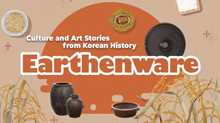 Earthenware08:28
Earthenware08:28 -
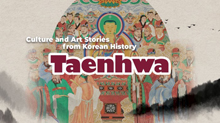 Taenghwa, or Buddhist Paintings in the Joseon Period08:36
Taenghwa, or Buddhist Paintings in the Joseon Period08:36 -
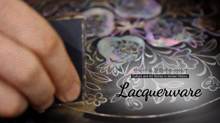 Lacquerware09:04
Lacquerware09:04 -
 Dyeing and Weaving08:21
Dyeing and Weaving08:21 -
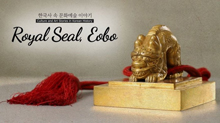 Royal Seal, Eobo07:53
Royal Seal, Eobo07:53 -
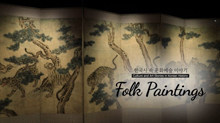 Folk paintings07:49
Folk paintings07:49 -
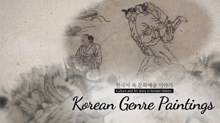 Korean Genre Paintings10:05
Korean Genre Paintings10:05 -
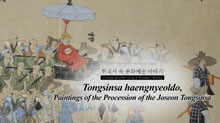 Paintings of the Procession of the Joseon Tongsinsa10:09
Paintings of the Procession of the Joseon Tongsinsa10:09 -
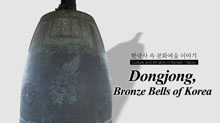 Dongjong, Bronze Bells of Korea08:50
Dongjong, Bronze Bells of Korea08:50 -
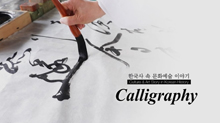 Calligraphy08:32
Calligraphy08:32 -
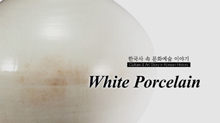 White Porcelain08:18
White Porcelain08:18 -
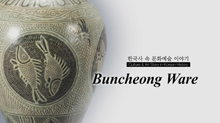 Buncheong Ware07:48
Buncheong Ware07:48 -
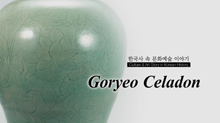 Goryeo Celadon07:54
Goryeo Celadon07:54 -
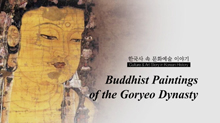 Buddhist Paintings of the Goryeo Dynasty07:57
Buddhist Paintings of the Goryeo Dynasty07:57 -
 Clay Figures, Figurines07:01
Clay Figures, Figurines07:01 -
 Clay Earthenware06:05
Clay Earthenware06:05 -
 Paintings of the Joseon Dynasty08:09
Paintings of the Joseon Dynasty08:09 -
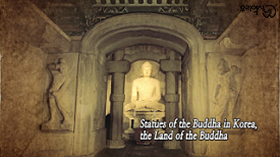 Statues of the Buddha in Korea09:03
Statues of the Buddha in Korea09:03

